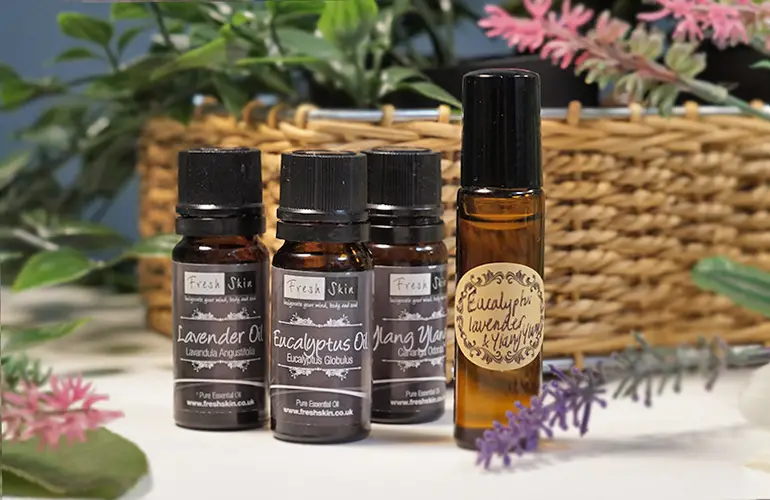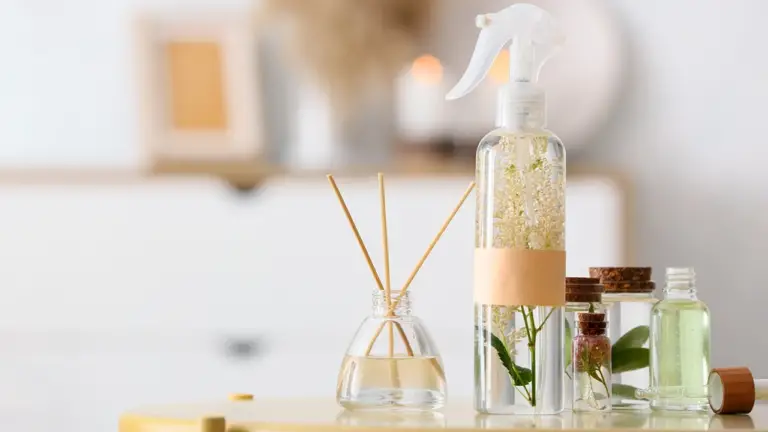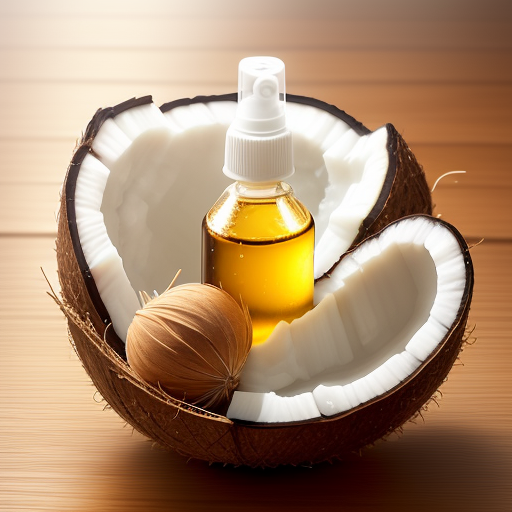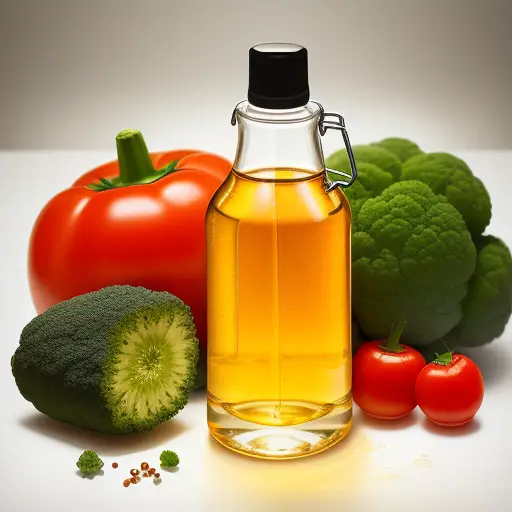As people become more conscious of their health and well-being, the use of essential oils has gained popularity. These highly concentrated plant extracts are known for their various therapeutic benefits. From improving mood to alleviating pain, essential oils have many applications. Many people wonder if essential oils can be used in spray bottles for easy use and application. In this article, we will explore whether it is safe to put essential oils in spray bottles and discuss the best practices for doing so.
What are essential oils and their benefits?
Essential oils are volatile compounds that are extracted from various parts of plants, including leaves, flowers, and stems. They contain the characteristic fragrance and therapeutic properties of the plant they are derived from. Each essential oil has its own unique set of benefits. Some of the popular essential oils and their benefits include:
- Lavender: Known for its calming properties and ability to promote relaxation and sleep.
- Peppermint: Invigorating and energizing, helps relieve headaches and aids digestion.
- Eucalyptus: Provides relief from congestion and respiratory issues.
- Tea Tree: Known for its antimicrobial properties and often used in skincare.
- Lemon: Uplifting and refreshing, supports immune health.
These are just a few examples, and there are countless other essential oils with their own therapeutic uses.
Can essential oils be used in spray bottles?
Yes, essential oils can be used in spray bottles, but it is important to follow certain guidelines for safety and effectiveness. Here are some things to keep in mind:
- Dilution: Essential oils are highly concentrated and should always be diluted before use. It is recommended to mix essential oils with a carrier oil such as coconut oil or jojoba oil to avoid skin irritation. The general rule of thumb is to use 1-2% essential oil dilution for spray bottles.
- Material: It is important to choose a spray bottle made of a material that is safe for use with essential oils. Glass or high-quality plastic bottles are preferred as they are less likely to interact or react with the oils.
- Storage: Essential oils are sensitive to light and heat, so it is crucial to store the spray bottle in a cool, dark place to maintain their potency and properties.
- Shake well: Before each use, make sure to shake the spray bottle well to disperse the essential oils evenly throughout the liquid.
- Test patch: It is always recommended to do a patch test on a small area of skin to ensure that you do not have any adverse reactions to the essential oil spray.
With these precautions in mind, using essential oils in spray bottles can be a convenient and effective way to enjoy their benefits. Whether it is for creating a refreshing room spray, a natural insect repellent, or a calming pillow mist, the possibilities with essential oil sprays are endless.
In conclusion, it is safe to put essential oils in spray bottles as long as the oils are properly diluted and the spray bottle is made of a suitable material. Remember to always follow the recommended dilution ratios and storage guidelines for optimal results.
Understanding Dilution Ratios
Different dilution ratios for essential oils
When it comes to using essential oils, dilution is an essential step in ensuring safe and effective application. Dilution refers to the process of combining essential oils with a carrier oil or other liquid to reduce their potency and minimize the risk of skin irritation or other adverse reactions. But can you put essential oils directly in a spray bottle? Let’s find out.
Different essential oils have different dilution ratios that are recommended for safe use. The most common dilution ratio for general use is 2-3%, which means using 2-3 drops of essential oil for every 1 teaspoon (5 mL) of carrier oil or water. However, this ratio can vary depending on various factors such as the individual’s sensitivity to the oil and the purpose of use.
For topical application on larger areas of the body or for more sensitive skin, it is generally recommended to use a lower dilution ratio of 1% or less. This means using 1 drop of essential oil for every 1 tablespoon (15 mL) of carrier oil or water. Some essential oils, such as peppermint and cinnamon, are considered “hot” oils and are more potent, so a lower dilution ratio is advisable to prevent skin irritation.
Why dilution is important for safe use
Diluting essential oils before use is crucial for several reasons. Firstly, undiluted essential oils are highly concentrated and can be irritating or even harmful to the skin. Applying undiluted essential oils directly to the skin can lead to skin reactions, such as redness, itching, or burning.
Secondly, dilution helps slow down the absorption rate of essential oils into the bloodstream, reducing the risk of systemic toxicity. When undiluted essential oils are applied to the skin, they can be rapidly absorbed, potentially causing adverse effects or interactions with medications.
Lastly, dilution also helps to prevent wastage of essential oils. Using undiluted essential oils can lead to using more than necessary, as they are highly concentrated. By diluting essential oils, you can extend their usage and make them last longer.
In conclusion, it is recommended to dilute essential oils before putting them in a spray bottle for safe and effective use. Dilution ratios vary depending on the purpose and sensitivity of the individual, but a general guideline is to use 2-3% dilution for most applications. Remember to always consult reliable sources, such as certified aromatherapists, for specific dilution recommendations for each essential oil.
Stay safe and enjoy the benefits of essential oils!
Types of Spray Bottles
Choosing the right spray bottle for essential oils
When it comes to using essential oils, many people wonder if it is safe and effective to put them in a spray bottle. The answer is yes, you can put essential oils in a spray bottle, but it is essential to choose the right type of spray bottle to ensure that the oils remain potent and do not degrade over time.
Choosing the right spray bottle: It is important to choose a spray bottle that is made of a material that is compatible with essential oils. Glass spray bottles are the most commonly recommended option as they do not react with the oils and help to preserve their potency. Plastic spray bottles, on the other hand, may be suitable for short-term use but are not recommended for long-term storage of essential oils.
Different materials and sizes available
There are various materials and sizes of spray bottles available that can be suitable for storing and using essential oils. Here are some options to consider:
- Glass spray bottles: These are the preferred choice for storing essential oils. They are non-reactive, do not leach any chemicals into the oils, and help to maintain their therapeutic properties. Glass spray bottles are available in various sizes, ranging from small travel-sized bottles to larger ones for home use.
- Plastic spray bottles: While plastic spray bottles are not the ideal choice for long-term storage, they can be suitable for short-term use or creating DIY cleaning sprays. Look for spray bottles made from high-quality, BPA-free plastic to minimize any potential chemical leaching.
- Metal spray bottles: Metal spray bottles, usually made of aluminum or stainless steel, are durable and can provide a stylish option for storing and using essential oils. However, it is important to ensure that the metal is coated on the inside to prevent any reaction with the oils.
- Size options: Spray bottles come in various sizes, including 1 oz, 2 oz, 4 oz, and larger. Consider your usage and whether you need a portable option or a larger bottle for home use.
Overall, putting essential oils in a spray bottle is a convenient way to use them for various purposes, such as creating room sprays, body mists, or cleaning solutions. By choosing the right spray bottle made of compatible materials, you can ensure that your essential oils remain potent and effective for longer periods.
Recipes for Essential Oil Sprays
DIY recipes for different purposes (room spray, linen spray, etc.)
If you’re wondering if you can put essential oils in a spray bottle, the answer is yes! Essential oil sprays are a versatile and convenient way to enjoy the benefits of aromatherapy. Whether you want to freshen up your home, spritz your linens, or create a calming atmosphere, here are some easy DIY recipes for essential oil sprays.
- Room Spray:
- Ingredients:
- 15-20 drops of your favorite essential oil (such as lavender, lemon, or peppermint)
- 2 ounces of distilled water
- Instructions:
- Combine the essential oil and distilled water in a spray bottle.
- Shake well before each use.
- Spray around the room to freshen up the air and create a pleasant aroma.
- Ingredients:
- Linen Spray:
- Ingredients:
- 10-15 drops of chamomile or lavender essential oil
- 2 ounces of witch hazel or vodka
- 2 ounces of distilled water
- Instructions:
- Mix the essential oil, witch hazel or vodka, and distilled water in a spray bottle.
- Shake well to combine all the ingredients.
- Spray lightly onto your pillows, sheets, or other linens for a relaxing scent.
- Ingredients:
- Calming Spray:
- Ingredients:
- 10-15 drops of lavender essential oil
- 5-8 drops of chamomile essential oil
- 1 ounce of witch hazel or vodka
- 3 ounces of distilled water
- Instructions:
- Combine the essential oils, witch hazel or vodka, and distilled water in a spray bottle.
- Shake well to blend the ingredients.
- Spray in your bedroom or on your pillow before bedtime to promote relaxation and calmness.
- Ingredients:
Proper ingredient ratios and mixing instructions
When creating essential oil sprays, it’s important to maintain proper ingredient ratios to ensure the safety and effectiveness of the sprays. Typically, essential oils should be diluted with a carrier substance such as distilled water, witch hazel, or vodka. The exact ratios may vary depending on personal preference and the desired strength of the spray. It’s recommended to start with a lower concentration of essential oils and adjust accordingly.
Mixing the ingredients properly is crucial for a well-blended and effective spray. Always shake the spray bottle before each use to ensure that the essential oils are evenly distributed. Additionally, be cautious when using essential oils on surfaces that could be damaged or stained by the oils. It’s a good practice to spot test the spray on a small, inconspicuous area before applying it to larger surfaces.
In conclusion, putting essential oils in a spray bottle is a wonderful way to enjoy the benefits of aromatherapy. With the right recipes and proper ingredient ratios, you can create a variety of sprays for different purposes. Remember to research the safety guidelines for individual essential oils and use them responsibly.
Safety Precautions
Potential risks and precautions when using essential oil sprays
Using essential oils in a spray bottle can be a convenient and effective way to enjoy their aromatic benefits. However, it’s essential to be aware of certain precautions to ensure safe usage. Here are some potential risks and precautions to consider when using essential oil sprays:
- Dilution: Essential oils are highly concentrated substances and should never be used undiluted on the skin or in a spray bottle. Dilute the essential oil with a carrier oil or water before adding it to the spray bottle. This helps to reduce the risk of skin irritation or sensitization.
- Skin Sensitivity: Every individual’s skin is unique, and some people may be more sensitive to certain essential oils. Before using an essential oil spray on your skin, perform a patch test on a small area to check for any adverse reactions.
- Avoiding Eyes and Mucous Membranes: Essential oils should never come into direct contact with your eyes, nose, mouth, or other mucous membranes. Spray the essential oil spray away from your face and avoid inhaling the mist directly.
Proper handling and storage guidelines
In addition to the precautions mentioned above, it’s important to handle and store essential oils properly to maintain their efficacy and safety. Here are some guidelines to follow:
- Keep out of reach of children and pets: Essential oils can be toxic if ingested or used improperly. Always store them in a secure place away from the reach of children and pets.
- Store in a cool, dark place: Essential oils are sensitive to light and heat, which can degrade their quality. Store your essential oil spray bottle in a cool, dark place, away from direct sunlight or sources of heat.
- Label your spray bottle: Clearly label your spray bottle with the name of the essential oil and its dilution ratio. This will help you identify the contents easily and ensure safe usage.
- Monitor for any changes: Over time, essential oils may oxidize, leading to a decrease in their therapeutic properties. Monitor your essential oil spray bottle for any changes in scent, color, or consistency, and discard if necessary.
Remember to always consult reliable sources such as PubMed or consult with a certified aromatherapist for specific recommendations and guidelines on using essential oils.
Overall, using essential oils in a spray bottle can be a safe and enjoyable experience as long as you take the necessary precautions and follow proper handling and storage guidelines.
Best Practices for Using Essential Oil Sprays
When it comes to using essential oils, many people wonder if they can be used in spray bottles for easy application and diffusion. The answer is yes, you can put essential oils in a spray bottle, but there are a few essential tips to keep in mind for optimal effectiveness and scent longevity.
Tips for optimal effectiveness and scent longevity
1. Choose the Right Bottle: It’s important to use a high-quality glass or PET plastic spray bottle that is specifically designed for use with essential oils. These bottles are often darkly tinted to protect the oils from light and prevent them from degrading.
2. Dilute Properly: Essential oils are highly concentrated and potent, so it’s crucial to dilute them before using them in a spray bottle. A general guideline is to mix 1-2% essential oils with a carrier liquid such as water, witch hazel, or aloe vera gel. This helps to ensure the oils are not too strong and prevent any potential skin irritations.
3. Shake Well Before Use: Essential oils can separate from the carrier liquid, so it’s essential to give the spray bottle a good shake before each use to distribute the oils evenly.
How to properly use and apply the sprays
1. Test Patch: Before applying the spray to a larger area, it’s recommended to do a patch test on a small area of skin to check for any sensitivities or allergic reactions.
2. Spritz in the Air: Essential oil sprays work well for freshening the air in a room or creating a pleasant aroma. Simply spritz the spray into the air and let the fine mist settle.
3. Spray on Fabrics: You can also use essential oil sprays to freshen up fabrics such as curtains, pillows, or linens. Hold the bottle a few inches away and lightly spray the desired area, allowing it to air dry.
It’s important to note that essential oil sprays should not be used directly on the skin as they can be irritating and may cause sensitivities. If you wish to use essential oils topically, it’s recommended to dilute them with a carrier oil such as almond oil or coconut oil.
In conclusion, it is possible to put essential oils in a spray bottle for easy application and diffusion. By following these best practices, you can safely and effectively enjoy the benefits of essential oils in spray form.
FAQs about Using Essential Oils in Spray Bottles
Answering common questions and concerns
There are several common questions and concerns when it comes to using essential oils in spray bottles. Let’s address some of the most frequently asked questions to clarify any misconceptions and provide guidance on how to safely and effectively use essential oil sprays.
Can you put essential oils in a spray bottle?
Yes, you can put essential oils in a spray bottle. Many people find sprays to be a convenient way to use essential oils for various purposes such as making room fresheners, linen sprays, or even homemade cleaning solutions. However, it’s crucial to dilute the essential oils properly and use appropriate caution.
Do I need to dilute essential oils before putting them in a spray bottle?
Yes, it is essential to dilute essential oils before putting them in a spray bottle. Undiluted essential oils can be too potent and may cause skin irritation or adverse reactions. Diluting essential oils with a carrier oil or a water-based solution helps to ensure that they are safe to use and effectively distributed in the spray.
What is the recommended dilution ratio for essential oil sprays?
The recommended dilution ratio for essential oil sprays varies depending on the purpose of the spray and the specific essential oil being used. As a general guideline, a dilution ratio of 2-3% is often recommended for most applications. This means adding approximately 15-20 drops of essential oil per ounce of carrier liquid.
Can I use tap water in my essential oil spray?
Using tap water in your essential oil spray is generally safe, but it’s important to consider the quality of the water in your area. If your tap water has a high mineral content or is treated with chlorine or other chemicals, it may affect the stability and efficacy of the essential oils. In such cases, using distilled or filtered water is a better option.
Here’s a handy table summarizing the key points:
| Question | Answer |
|---|---|
| Can you put essential oils in a spray bottle? | Yes, you can put essential oils in a spray bottle. |
| Do I need to dilute essential oils before putting them in a spray bottle? | Yes, it is crucial to dilute essential oils before putting them in a spray bottle. |
| What is the recommended dilution ratio for essential oil sprays? | The recommended dilution ratio for essential oil sprays is 2-3%. |
| Can I use tap water in my essential oil spray? | While using tap water is generally safe, using distilled or filtered water is better. |
Clarifying misconceptions
There are a few misconceptions about using essential oils in spray bottles that should be clarified.
Myth: Essential oils can be used undiluted in sprays.
Using undiluted essential oils in sprays is not recommended as it can lead to skin irritation or sensitization. Always dilute essential oils before using them in sprays.
Myth: Essential oil sprays can replace traditional cleaning products.
While essential oil sprays can be effective for certain cleaning tasks, they are not a substitute for traditional cleaning products when it comes to eliminating bacteria or viruses. It’s important to use appropriate cleaning methods and products for disinfection purposes.
By understanding the proper usage and taking necessary precautions, you can safely and effectively use essential oils in spray bottles for various purposes. Remember to always do your research, consult reliable sources, and follow recommended guidelines when using essential oils.
Conclusion
Using essential oils in spray bottles can be a convenient and effective way to enjoy their benefits. However, it is important to do so with caution and proper knowledge. Always dilute essential oils, choose suitable carrier oils, and consider any potential sensitivities or allergies. Experiment with different recipes and applications to find what works best for you. Remember to store your spray bottle in a cool, dark place to preserve the oils’ potency. Enjoy the refreshing and aromatherapeutic experience of using essential oil sprays while being mindful of safety guidelines. Happy spraying!
Summary of key points:
– Using essential oils in spray bottles can offer various benefits, such as aromatherapy, air freshening, and natural cleaning.- Diluting essential oils before using them in spray bottles is crucial to avoid skin irritations or other adverse reactions.- Carrier oils and water are commonly used to dilute essential oils in spray bottle recipes.- Essential oil spray bottles can be used in various applications, including room sprays, linen sprays, and personal care products.- It is important to consider any sensitivities or allergies to specific oils and to test a small area of the skin before applying an essential oil spray topically.
Final thoughts on using essential oils in spray bottles
Using essential oils in spray bottles can be a versatile and enjoyable way to incorporate their benefits into your daily routine. Whether you want to freshen up your living space, enhance your mood, or create natural cleaning solutions, essential oil sprays offer an accessible and customizable solution. Just remember to prioritize safety by diluting the oils properly, being mindful of sensitivities, and ensuring proper storage. With a little experimentation and knowledge, you can harness the power of essential oils in spray bottles to enhance your well-being and create a pleasant and aromatic environment.




